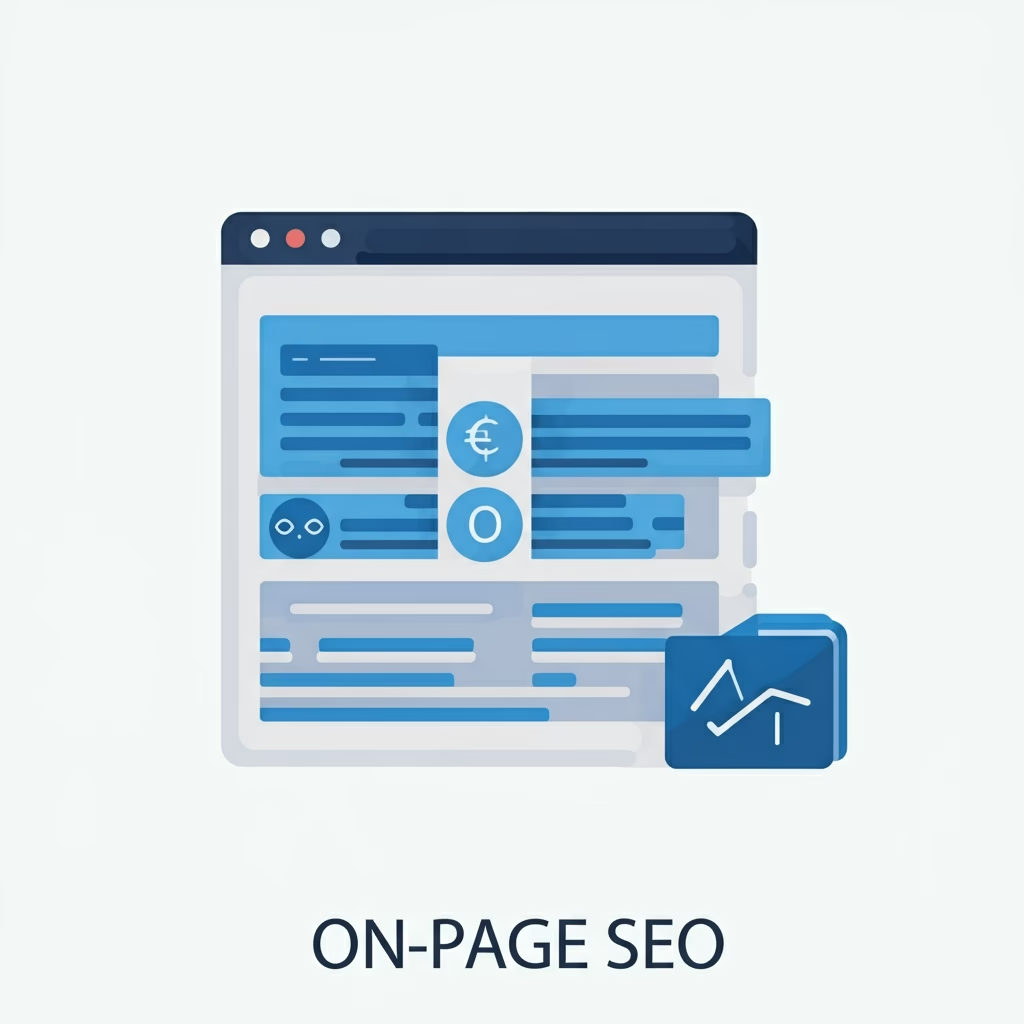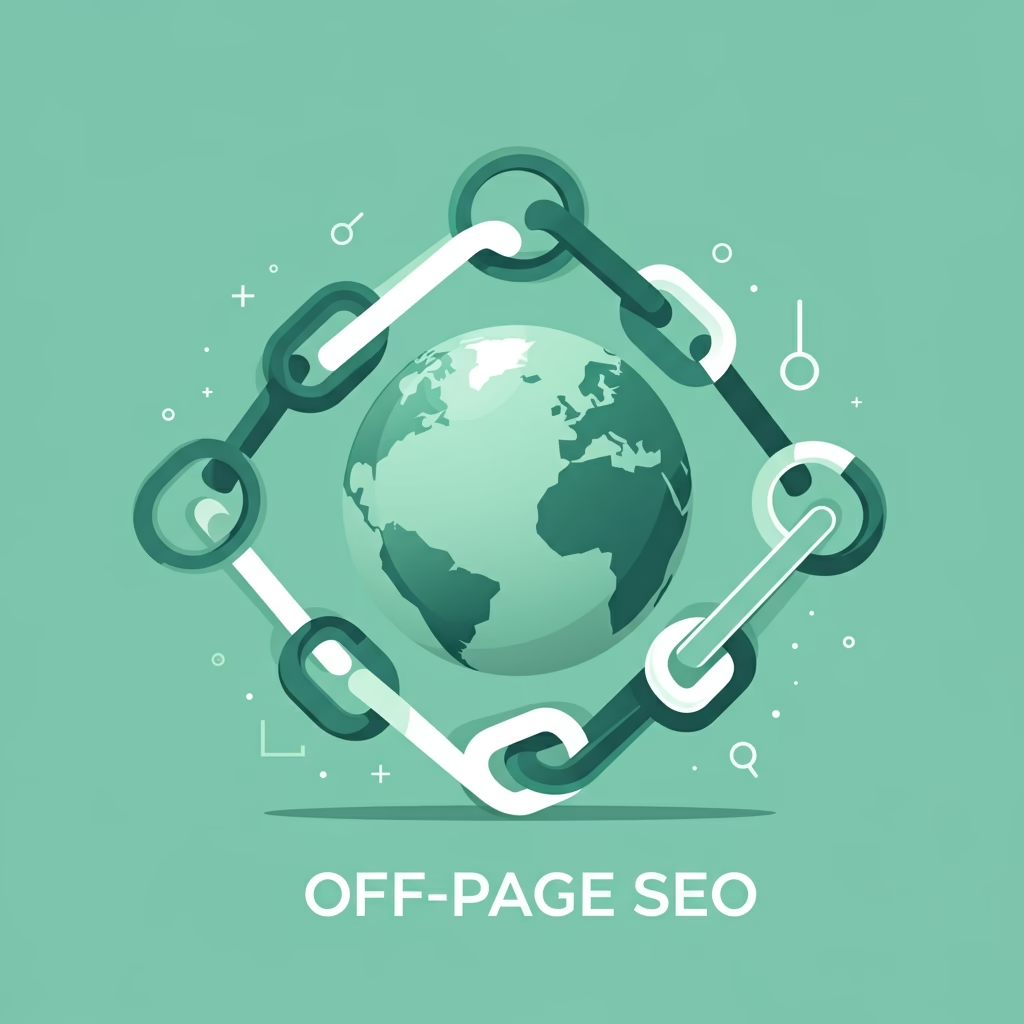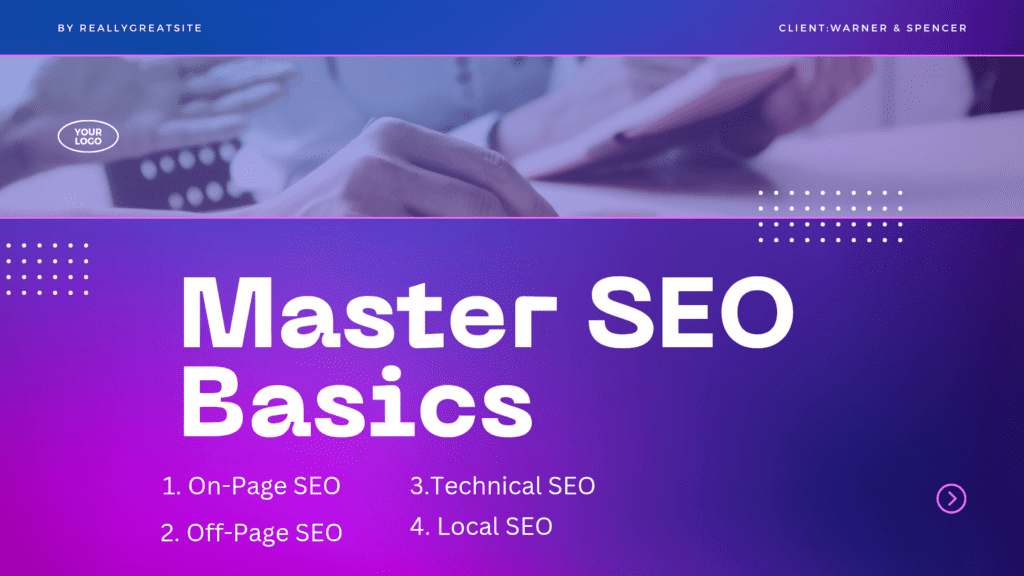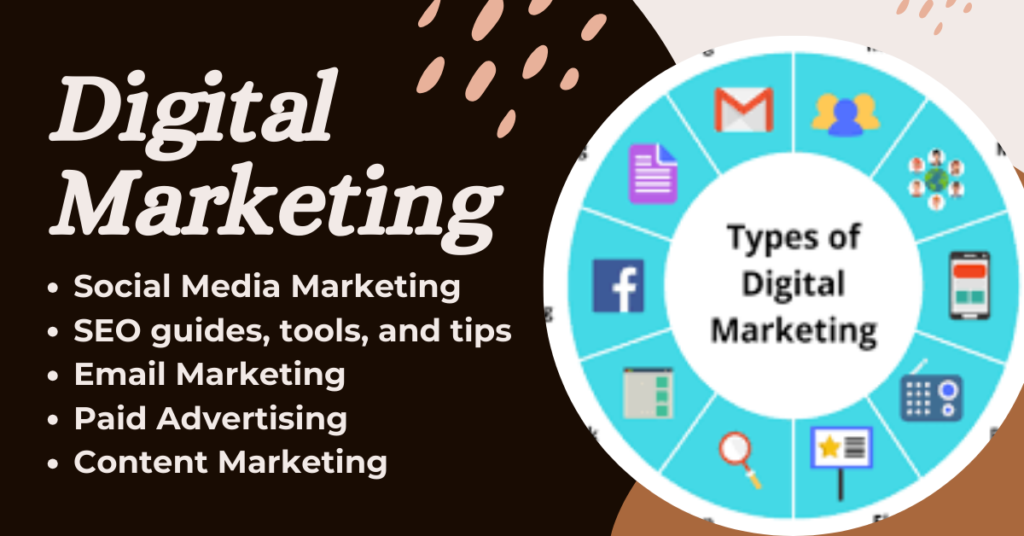SEO stands for Search Engine Optimization. It’s a term you may have heard often when discussing website visibility, but what does it actually mean? SEO is the practice of optimizing your website to improve its rankings in search engine results pages (SERPs), such as Google, Bing, or Yahoo. Simply put, it’s the process of making your website more visible to people searching for topics, services, or products that you offer.
When someone types a search query into a search engine, like “best pizza in New York” or “how to start a blog,” the search engine uses an algorithm to determine which websites are most relevant and useful for that query. Websites that appear higher in search results are typically the ones that are well-optimized for SEO.
SEO is not a one-time task. It’s an ongoing process that requires constant updates and changes. But with the right approach, SEO can help your website attract more organic traffic (traffic that comes naturally without paying for ads) and improve your online presence.

Why is SEO Important?
The importance of SEO cannot be overstated. Here’s why:
1. Increases Visibility and Traffic: When your website ranks higher on search engine results, it gets more visibility. More visibility means more people will visit your website, leading to higher traffic. If you’re a business owner, this can result in more customers or clients.
2. Free and Organic Traffic: Unlike paid advertising, SEO brings traffic without you having to pay for every click. This is what we call “organic traffic.” By using effective SEO strategies, you can get consistent, free traffic over time.
3. Builds Credibility and Trust: Websites that appear on the first page of search engine results are often seen as more credible and trustworthy by users. The higher your website ranks, the more likely people are to trust it and click through to learn more.
4. Improves User Experience: A major part of SEO is improving the user experience on your website. When you focus on factors like faster load times, mobile-friendliness, and easy navigation, you not only help search engines rank your site better but also create a better experience for your visitors.
5. Cost-Effective: While paid advertisements can be effective, they often require continuous investment. SEO, on the other hand, is a more long-term strategy. Once you rank high in search results, you can continue to benefit from the traffic without paying for every click.
6. Supports Other Marketing Efforts: SEO works hand-in-hand with your other marketing strategies. For instance, high-quality SEO can boost the performance of your social media marketing, email marketing, and even your paid ads, creating a more integrated and effective marketing strategy.

How Does SEO Work?
SEO works by focusing on a variety of factors that help search engines understand your website and its content. Search engines use algorithms to determine how relevant and trustworthy a site is for a particular search query. These algorithms consider several factors, such as:
1. Keywords: Keywords are the words or phrases that users type into search engines. Optimizing your website’s content with the right keywords helps search engines understand what your site is about and helps you rank for those terms.
2. Content Quality: Search engines prioritize high-quality, relevant content. Content that answers users’ questions, provides value, and is regularly updated will perform better in search rankings.
3. Backlinks: Backlinks are links from other websites that direct users to your site. Search engines see backlinks as a sign of trust and authority. The more quality backlinks your website has, the better it can rank.
4. Site Structure: A well-organized website is easier for search engines to crawl (analyzing and indexing your pages). This means using a clear navigation structure, optimizing URLs, and ensuring your site is mobile-friendly.
5. Page Speed: Faster websites provide a better user experience and are preferred by search engines. A slow-loading site can negatively impact your ranking.
6. Technical SEO: This refers to the technical elements that help search engines crawl and index your site more efficiently. It includes elements like SSL encryption (for security), XML sitemaps, and mobile optimization.
7. User Experience (UX): Websites that offer a good user experience tend to rank higher. Factors like how easy it is to navigate, how fast the site loads, and whether it’s mobile-friendly are important.
8. Social Signals: While not a direct ranking factor, social signals (like shares and likes) can help increase your site’s visibility and bring in more traffic, indirectly supporting your SEO efforts.

Types of SEO
Now that we’ve discussed what SEO is and why it’s important, it’s time to explore the different types of SEO that help improve a website’s performance. SEO can be broken down into several key types, each focusing on different aspects of optimization. These include:
1. On-Page SEO
2. Off-Page SEO
3. Technical SEO
4. Local SEO
5. E-Commerce SEO
We’ll dive into the details of each type in separate sections, so stay tuned for the next part, where we’ll explore the different types of SEO and their importance.

1. On-Page SEO: What It Is and How to Do It
On-Page SEO refers to the optimization of elements on your website that influence your search engine rankings. This includes content, keywords, meta tags, images, and the structure of your website. The goal is to make your site easy for both search engines and users to understand, ensuring that your content is relevant to the search queries people are typing into Google.
Here are the main elements to focus on for On-Page SEO:
1.1 Content Quality
The most important aspect of On-Page SEO is high-quality content. Content is what your visitors come for, and search engines prioritize content that is informative, useful, and relevant to the user’s query.
Be informative and helpful: Your content should directly answer the questions users are asking. If your article or page addresses a topic thoroughly and offers value, it is more likely to rank well.
Use keywords naturally: Keywords are terms or phrases that people search for. You need to place these keywords throughout your content in a natural way. Don’t force them into sentences. Aim for a natural flow that serves the reader’s needs.
Make your content easy to read: Break your content into small, digestible chunks. Use short paragraphs, bullet points, and subheadings to make the text scannable and easy to read. This not only helps with SEO but also provides a better user experience.
Include a call to action: This helps drive engagement. Whether you want visitors to buy something, sign up for a newsletter, or just keep browsing, encourage them to take the next step.
1.2 Keyword Optimization
Keywords are the foundation of On-Page SEO. They are the terms people type into search engines when looking for something. By optimizing your content around these keywords, search engines will know what your page is about and rank it accordingly.
Keyword research: Before you write content, use tools like Google Keyword Planner, Ahrefs, or SEMrush to find out which keywords are relevant to your business and have good search volume.
Use keywords strategically: Place your target keyword in:
The title tag (the clickable headline in search results).
The meta description (a short summary of the page).
The URL (website address).
In headings (H1, H2, etc.).
Throughout the content, but avoid keyword stuffing.
1.3 Title Tags and Meta Descriptions
The title tag is the first thing that appears in search results, so it needs to be clear and compelling. The meta description is a brief summary of what your page is about and often appears below the title in search results.
Title Tag: Keep your title between 50–60 characters. Include the main keyword and make it engaging. For example, “Best SEO Tips for Beginners: Improve Your Website’s Ranking.”
Meta Description: Aim for 150–160 characters. Write a short, enticing summary that encourages people to click. Include relevant keywords but focus on providing a clear, concise answer to the user’s query.
1.4 Image Optimization
Images can help your content stand out, but if they aren’t optimized, they can slow down your site and harm your SEO.
Use descriptive file names: Instead of “image1.jpg,” use a more descriptive name, such as “best-coffee-shop-near-me.jpg.”
Use alt text: Alt text is a description of the image that helps search engines understand what the image is about. It also improves accessibility for people with visual impairments.
Optimize image sizes: Large images can slow down your site’s loading speed, negatively impacting both user experience and SEO. Compress images without losing quality to make your website load faster.
1.5 Internal Linking
Internal links are links that point to other pages on your own website. They help search engines understand the structure of your website and spread link equity throughout your site.
Link to related content on your website to encourage visitors to spend more time on your site.
Use descriptive anchor text (the clickable part of the link) to help both users and search engines understand the topic of the linked page.

2. Off-Page SEO: What It Is and How to Do It
Off-Page SEO refers to the actions you take outside of your website to improve its rankings on search engines. Unlike On-Page SEO, which involves optimizing elements directly on your site, Off-Page SEO focuses on improving your website’s authority, credibility, and trustworthiness through external factors like backlinks, social media, and online mentions.
2.1 Backlinks: The Heart of Off-Page SEO
Backlinks are links from other websites that point to your site. Think of backlinks as votes of confidence. When a reputable website links to your content, it signals to search engines that your site is trustworthy and authoritative.
Quality over quantity: A few high-quality backlinks from authoritative websites are more valuable than dozens of links from low-quality sites.
How to earn backlinks:
Create shareable content: If your content is informative, entertaining, or unique, other websites might naturally link to it.
Guest blogging: Write articles for other websites in your industry. In exchange, you can include a link to your website.
Build relationships: Network with influencers or bloggers in your field. Genuine relationships often lead to valuable backlinks.
Use broken link building: Find broken links on other websites and suggest your content as a replacement.
2.2 Social Media Engagement
While social media signals (like likes, shares, or comments) are not a direct ranking factor, they can help increase the visibility of your content and drive traffic to your site.
Share your content on social media: Post links to your website on platforms like Facebook, Twitter, LinkedIn, or Instagram. The more people engage with your content, the more likely it will get noticed by others, including potential backlinkers.
Build a community: Engage with your audience by responding to comments and sharing valuable content. The more engaged your followers are, the more likely they are to share your content, increasing your chances of earning backlinks.
2.3 Online Reputation and Mentions
Search engines also take into account how your website is perceived online. Mentions of your brand, even without direct backlinks, can help improve your SEO.
Get mentioned on reputable websites: Reach out to media outlets, blogs, or influencers who may mention your brand in their content.
Encourage reviews: Positive reviews on sites like Google My Business, Yelp, or Trustpilot can help build your reputation and trustworthiness.
Monitor brand mentions: Use tools like Google Alerts to monitor when your brand is mentioned online. This can help you spot opportunities for backlinks or further engagement.

3. Technical SEO: What It Is and How to Do It
Technical SEO involves optimizing the backend structure of your website to help search engines crawl and index it effectively. It ensures that your site is technically sound, fast, and mobile-friendly, providing a seamless user experience.
3.1 Why Is Technical SEO Important?
Without proper technical SEO, even the best content won’t rank well because search engines may face challenges in accessing or understanding your site. It acts as the foundation of your SEO strategy.
3.2 Key Elements of Technical SEO
a. Website Speed Optimization
Why it matters: Search engines prioritize websites that load quickly. Visitors are likely to leave if a site takes more than 3 seconds to load.
How to optimize?
Use free tools like Google PageSpeed Insights or GTmetrix to analyze speed.
Compress images using tools like TinyPNG or ImageOptim.
Use caching plugins if you’re on WordPress (e.g., WP Rocket).
Upgrade to a reliable hosting provider for better speed. If you’re looking for affordable and high-quality hosting, check out this hosting provider.
b. Mobile-Friendliness
Why it matters: With more than 50% of web traffic coming from mobile devices, having a mobile-friendly website is non-negotiable.
How to optimize?
Use a responsive design that adapts to any screen size.
Test your site’s mobile usability using Google’s Mobile-Friendly Test Tool.
c. Secure Websites (HTTPS)
Why it matters: Websites with HTTPS are seen as more secure and trustworthy by both users and search engines.
How to optimize?
Purchase and install an SSL certificate. Most hosting providers offer SSL for free or at a low cost. Consider a Fast and secure hosting provider for affordable options. Like hostinger
Crawl ability and Index ability
Why it matters: Search engines need to access and understand your content to rank it.
How to optimize:
Create and submit a sitemap to Google Search Console.
Use robots.txt to guide search engines on which pages to crawl or ignore.
Ensure there are no broken links or 404 errors on your site.
e. Structured Data (Schema Markup)
Structured data helps search engines understand your content better and display rich snippets (e.g., star ratings, product prices) in search result.
Use schema generators like Schema.org.
Add structured data for articles, recipes, events, or local businesses.
4. Local SEO: What It Is and How to Do It
Local SEO focuses on optimizing your online presence to attract more business from relevant local searches. If you run a local business, this type of SEO ensures that your potential customers find you when they search for services in your area.
4.1 Why Is Local SEO Important?
Local SEO is crucial for businesses that have physical locations or serve specific geographic areas. For example, when someone searches for “best coffee shop near me,” local SEO ensures that your business appears in the results.
4.2 Key Elements of Local SEO
a. Google My Business (GMB) Optimization
Why it matters: Google My Business listings dominate local search results.
How to optimize:
Claim and verify your business on Google My Business.
Provide complete and accurate information, including:
Business name
Address
Phone number (NAP)
Business hours
Add high-quality photos of your business, products, or services.
Encourage customers to leave positive reviews.
b. Local Keywords
Local keywords help you rank for searches in your area.
How to optimize:
Use keywords that include your location, such as “best graphic designer in New York.”
Optimize meta tags, content, and URLs with local keywords.
c. Local Citations
Citations are mentions of your business on other websites (e.g., online directories).
Ensure your NAP (Name, Address, Phone) is consistent across all directories.
List your business in local directories like Yelp, TripAdvisor, and Yellow Pages.
d. Online Reviews
Why it matters: Positive reviews build trust and influence customer decisions.
Ask satisfied customers to leave reviews on Google, Yelp, or industry-specific platforms.
Respond to both positive and negative reviews professionally.
e. Localized Content
Content that targets local audiences improves your relevance for local searches.
How to create:
Write blog posts about local events or community news.
Create landing pages for each location you serve.
“Having a professional website strengthens your online presence. You can get a domain and hosting for your business from this provider at a very reasonable cost.”
—
Conclusion
Both Technical SEO and Local SEO are essential components of a successful SEO strategy. Technical SEO ensures that your website is functional, secure, and fast, while Local SEO helps local businesses connect with nearby customers. By mastering these techniques, you can improve your site’s visibility, attract more traffic, and achieve better results.
If you’re ready to start your SEO journey, make sure you have a reliable domain and hosting provider. This ensures your website runs smoothly and ranks higher in search engines!



